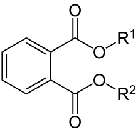Bisphenol A
In 2006, Felix Grun and Bruce Blumberg, two biologists from the University of California, recently published a study about chemicals known to promote obesity. These artificial elements, which researchers have named "obesogens", are foreign compounds that compromise the balance and development of lipid metabolism. This would come from the fact that all these unknown molecules in our body often disrupting the endocrine functions. (1)
Since 2006, studies have identified about 20 such substances considered obesogenic. (2) .
Even worse, at least three of these substances are commonly found in most American households.
Bisphenol A
The Bisphenol A - or BPA - is arguably the best-known and one of the most devastating obesogens. Its discovery by a Russian scientist dates back to 1928. This molecule was used as a substitute for estrogen. Should we be surprised that it induces endocrine disruption?
From 1940 onwards, industrialists understood that it could be used to manufacture rigid plastics. This synthetic compound will be used as early as 1957 in the manufacture of polycarbonate plastics and epoxy resins; in other words, it is present in many common and everyday consumer goods such as water bottles, packaging trays and cans. (3)
Although the Food and Drug Administration has proclaimed that exposure to small amounts of BPA is safe, scientific research shows otherwise. A study published in"The Journal of Steroid Biochemistry and Molecular Biology", for example, proved that BPA - which can leak from the container in our food and drink - has many influences on endocrine pathways. (4) Many studies have also associated BPA exposure with theobesitywhether human or animal. (5,6,7)
Phthalates
The phthalates are a group of chemicals added to plastics and other substances to soften them and increase their flexibility. It is in 1936 that a French chemist synthesizes them. The shortage of natural rubber after World War II is at the origin of their development. They are invading the market for use in flexible plastics and are currently found in hundreds of consumer goods - including children's toys, cosmetics and pharmaceuticals, food and paint containers. They are also linked to weight gain.
In fact, three independent studies have shown that phthalates levels in the body are associated with
increased waist circumference and abdominal fat. ( 8,9,10)
Another study, published in the journal "Molecular and Cellular Endocrinology"in 2009, provided evidence that phthalates may promote weight gain by disrupting a hormone receptor that plays a key function in fat and carbohydrate metabolism. (11)
Sources:
(1) http://press.endocrine.org/doi/pdf/10.1210/en.2005-1129 [PDF]
(4) http://www.ncbi.nlm.nih.gov/pubmed/21605673
(5) http://www.sciencedirect.com/science/article/pii/S0013935111001435
(6) http://press.endocrine.org/doi/abs/10.1210/jc.2011-1989
(7) http://www.sciencedirect.com/science/article/pii/S0892036211000742
(8) http://www.sciencedirect.com/science/article/pii/S0013935111003112
(9) http://www.biomedcentral.com/content/pdf/1476-069x-7-27.pdf [PDF]





